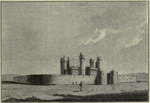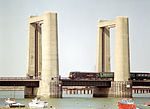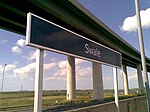Queenborough-in-Sheppey
Borough of SwaleDistricts of England abolished by the Local Government Act 1972History of KentIsle of SheppeyKent geography stubs ... and 1 more
Municipal boroughs of England
Queenborough-in-Sheppey was a municipal borough in Kent, England from 1968 to 1974. It was created by a merger of the Municipal Borough of Queenborough with Sheerness Urban District and Sheppey Rural District, and occupied the entire Isle of Sheppey. It incorporated the following parishes: Eastchurch Elmley Harty Leysdown-on-Sea Minster in Sheppey Queenborough Sheerness WardenIn 1974 the council was abolished under the Local Government Act 1972, and the area now forms part of the Swale district. Queenborough and various parishes in the island now have independent parish and town councils again.
Excerpt from the Wikipedia article Queenborough-in-Sheppey (License: CC BY-SA 3.0, Authors).Queenborough-in-Sheppey
Alsager Avenue, Borough of Swale Queenborough
Geographical coordinates (GPS) Address Nearby Places Show on map
Geographical coordinates (GPS)
| Latitude | Longitude |
|---|---|
| N 51.41 ° | E 0.74 ° |
Address
Alsager Avenue
Alsager Avenue
ME11 5JN Borough of Swale, Queenborough
England, United Kingdom
Open on Google Maps







